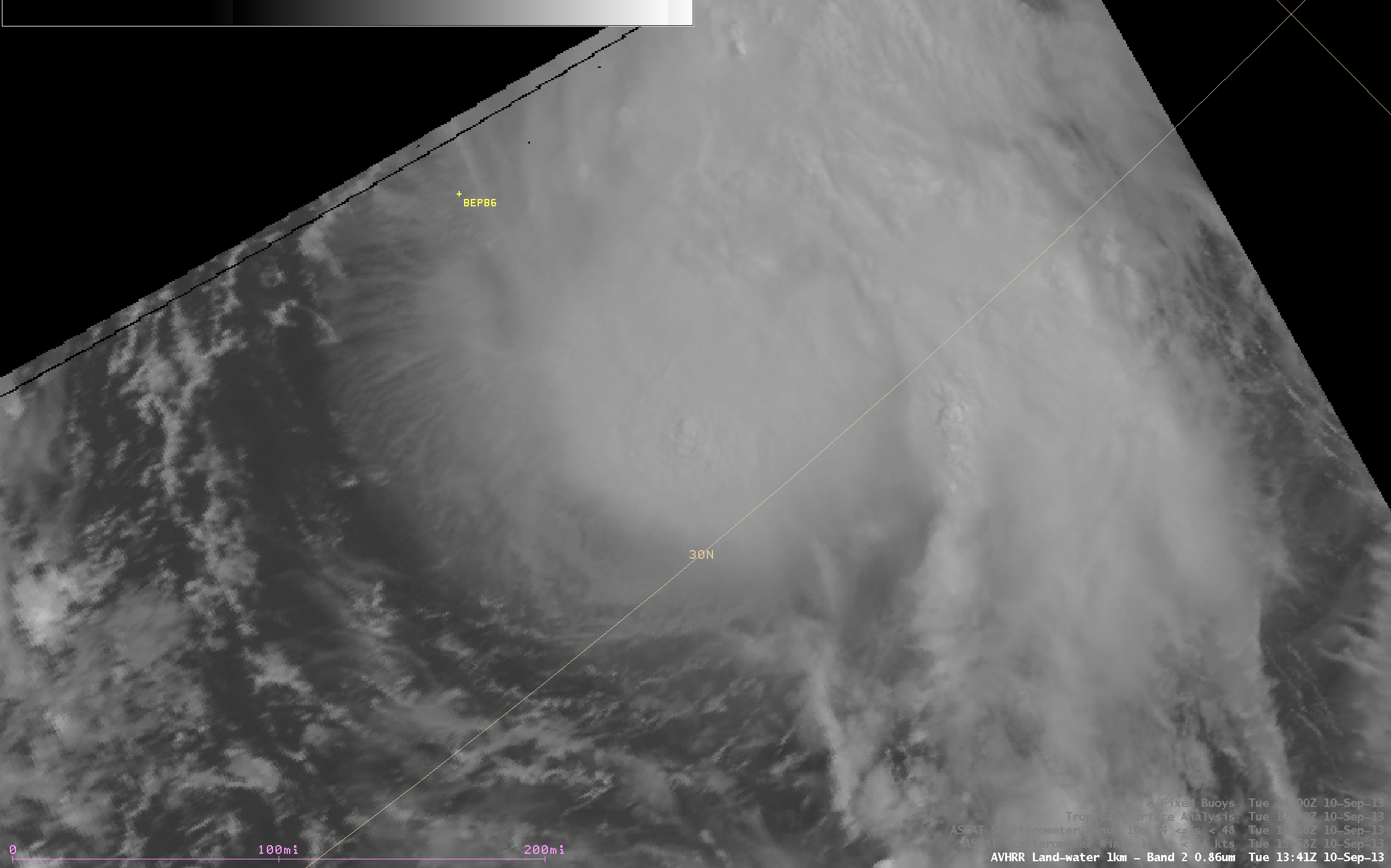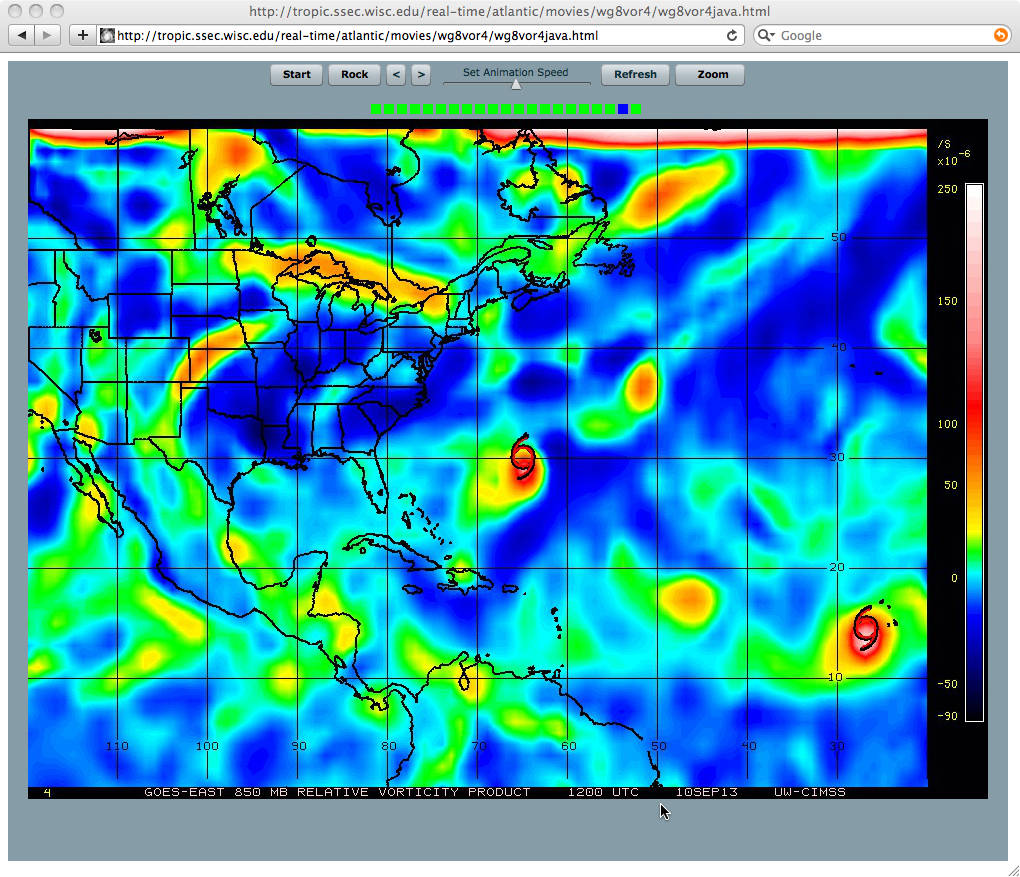Regeneration of Tropical Storm Gabrielle

POES AVHRR 0.84 µm visible channel and 12.0 µm IR channel images (with overlays of surface buoy, surface analysis, and ASCAT winds)
After a four and a half day hiatus, Tropical Storm Gabrielle began to regenerate south of Bermuda on 10 September 2013. AWIPS images of 1-km resolution POES AVHRR 0.86 µm visible channel and 12.0 µm IR channel data at 13:41 UTC (above) showed overlays of surface buoys, surface analysis, and ASCAT surface scatterometer winds. A number of these ASCAT winds exhibited speed values of 45-46 knots, prompting NHC to adjust the intensity of Gabrielle upward:
TROPICAL STORM GABRIELLE SPECIAL DISCUSSION NUMBER 9 NWS NATIONAL HURRICANE CENTER MIAMI FL AL072013 130 PM AST TUE SEP 10 2013 A PAIR OF ASCAT PASSES FROM 1342Z AND 1436Z INDICATE THAT GABRIELLE IS STRONGER THAN PREVIOUSLY ESTIMATED. BOTH PASSES SHOWED SEVERAL 45-KT WIND RETRIEVALS...AND THAT IS THE INITIAL INTENSITY FOR THIS SPECIAL ADVISORY. THE INTENSITY FORECAST HAS BEEN ADJUSTED UPWARD AT 12 AND 24 HOURS TO 50 KT BASED ON THE INCREASE IN THE INITIAL INTENSITY. THE ANALYZED 34-KT WIND RADII HAVE ALSO BEEN ADJUSTED OUTWARD BASED ON THE ASCAT DATA...AND THEIR FORECAST HAS BEEN MODIFIED AS WELL TO REFLECT THE LARGER WIND FIELD. AN AIR FORCE RESERVE AIRCRAFT WILL INVESTIGATE GABRIELLE LATER THIS AFTERNOON TO PROVIDE MORE DETAILED INFORMATION ON THE STRENGTH AND STRUCTURE OF THE CYCLONE.
A sequence of 6-hour interval 850 hPa relative vorticity product images from the CIMSS Tropical Cyclones site (above; click image to play animation) showed that the lower-tropospheric vorticity feature associated with Tropical Storm Gabrielle remained fairly intact during the 06-10 September period (between the times when Gabrielle had exhibited tropical cyclone organization and intensity).
McIDAS images of 1-km resolution GOES-13 0.63 µm visible channel data (above; click image to play animation) revealed a well-defined central dense overcast (CDO) convective burst early in the day, followed by the emergence of the low-level circulation of Gabrielle as the middle and high-altitude cloud layers were sheared off to the northeast.


